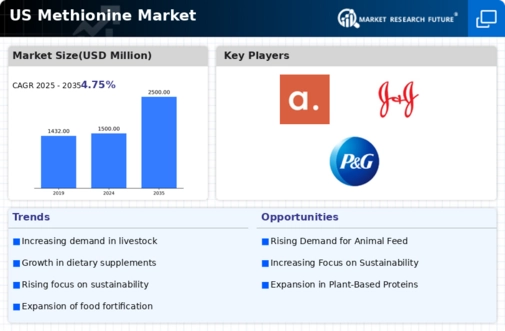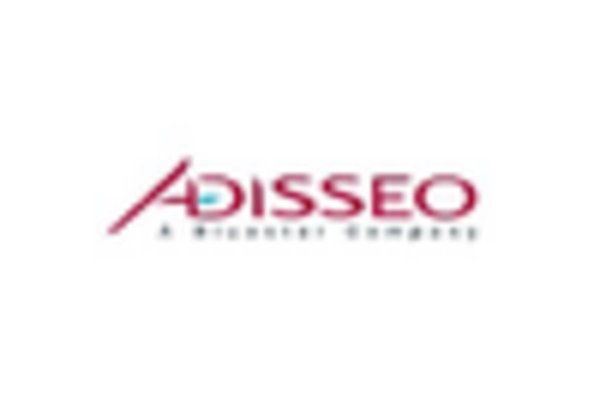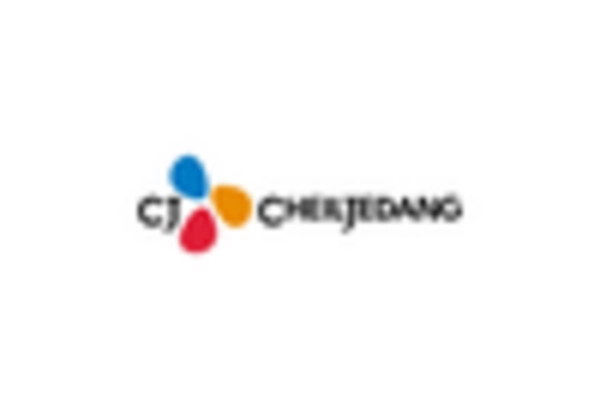Rising Meat Consumption Trends
Rising meat consumption trends in the US are contributing to the growth of the methionine market. As consumer preferences shift towards higher protein diets, the demand for meat products is on the rise. This trend is particularly evident in the beef and poultry sectors, where methionine plays a crucial role in enhancing feed efficiency and overall meat quality. According to recent data, meat consumption in the US is expected to increase by approximately 2% annually over the next five years. This increase in demand for meat products is likely to drive the need for methionine in animal feed, thereby positively impacting the methionine market.
Expansion of the Poultry Industry
The expansion of the poultry industry in the US is significantly influencing the methionine market. As poultry production continues to grow, the need for high-quality feed ingredients, including methionine, becomes increasingly critical. The poultry sector is one of the largest consumers of methionine, accounting for nearly 60% of total consumption in animal nutrition. This demand is driven by the need for improved feed efficiency and meat quality. Furthermore, the US poultry industry is projected to reach a market value of $50 billion by 2026, which suggests a robust growth trajectory for methionine consumption in this sector. Consequently, the methionine market is likely to benefit from this expansion.
Regulatory Support for Feed Additives
Regulatory support for the use of feed additives, including methionine, is a key driver in the methionine market. The US government has implemented various policies that encourage the use of amino acids in animal nutrition to enhance feed efficiency and animal health. This regulatory environment is conducive to the growth of the methionine market, as it promotes the adoption of scientifically backed feed formulations. Additionally, the approval of new methionine products and formulations by regulatory bodies is expected to further stimulate market growth. The increasing focus on food safety and quality assurance in livestock production is likely to reinforce the demand for methionine as a vital feed additive.
Increasing Awareness of Health Benefits
The growing awareness of the health benefits associated with methionine is driving its demand in the methionine market. Methionine is recognized for its role in protein synthesis and as an essential amino acid in animal diets. This awareness is particularly pronounced among livestock producers who are increasingly focusing on optimizing animal health and productivity. As a result, the demand for methionine in animal feed formulations is projected to rise, with estimates suggesting a growth rate of approximately 5% annually. This trend indicates a shift towards more nutritionally balanced feed, which is likely to enhance the overall performance of livestock, thereby positively impacting the methionine market in the US.
Technological Innovations in Feed Production
Technological innovations in feed production are reshaping the landscape of the methionine market. Advances in feed formulation technologies and production processes are enabling manufacturers to create more efficient and effective feed products. These innovations not only enhance the bioavailability of methionine but also improve overall feed quality. The integration of precision nutrition and data analytics in feed production is expected to optimize the use of methionine, leading to better animal performance and reduced waste. As these technologies continue to evolve, they are likely to drive the growth of the methionine market, as producers seek to leverage these advancements for competitive advantage.

















Leave a Comment